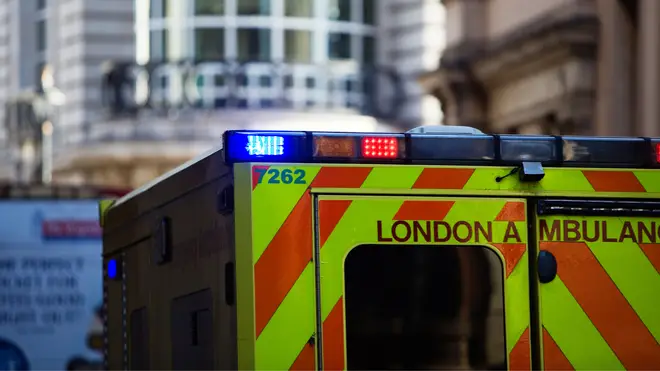
Nick Ferrari 7am - 10am
17 August 2021, 09:12 | Updated: 17 August 2021, 11:18

An ambulance worker in London has told LBC he was recently delayed by up to 15 minutes after being blocked by a Low Traffic Neighbourhood (LTN) while trying to help a patient who had collapsed from cardiac arrest and later passed away.
Dave* says his way to the call in East London was blocked, first by LTN flower planters obstructing the road, then by one-way systems that were not logged in his sat-nav, and finally by road-works and the subsequent "nightmare" build-up of traffic thanks to all these measures.
He believes the patient - who was "young" and "otherwise fit and healthy" - might have survived, if only he had got to him on time.
"Cardiac arrest is the ultimate thing, your heart has stopped working, your body is literally dying," he said.
"Without immediate interventions your chances of survival are very poor, you have about three minutes.
"And – I came across an LTN, I was trying to use my maps to get around them, but... it cost me an extra 15 minutes to get there."
He added: “That delay in getting there, I am absolutely certain impacted their survival.”

Paramedic hits out at LTNs after a patient died due to delays
Last week Andy Byford, the Commissioner of Transport for London (TfL), told Nick Ferrari at Breakfast that they would look again at any LTNs which had proved problematic, insisting that emergency services had keys to move certain bollards – and that their map systems were kept up to date.
But Dave told LBC that was not the case when trying to access the patient, as one-way roads had been installed that he was not aware of.
"Our maps are digitally updated regularly, but things around London are changing so quickly," he said.
"The ambulance service can’t keep up, we can’t keep updating everyday and it just becomes a nightmare."
He also said that the ambulance service did not have keys to move the bollards.
Read more: Unemployment drops by 182,000 with 'no sign' of mass job cuts as furlough ends
Read more: Plymouth mass shooting could be reclassified as terror attack, police say
Dave believes all LTNs should be changed to remove the physical barriers and allow emergency vehicles access, pleading with councils and TfL to instead: "Stick up a camera and put signs that say ‘No Vehicle Access EXCEPT Emergency Services."
He says he understands the need to improve air pollution in London, but believes LTNs are not the answer, and are only making people more unsafe.
A London Ambulance Service spokesperson said: "Patient safety is our highest priority, and to date, we have not been made aware of any fatalities involving Low Traffic Neighbourhood schemes.
"If ambulance crews have any information around delays to responding to incidents, they should report it via the appropriate internal channels, so it can be raised urgently with the relevant London agency or authority.”

TfL chief challenged over Low Traffic Neighbourhoods
Penny Rees, TfL's Head of Healthy Streets Investment, said: “We fully appreciate how important it is for paramedics to be able to move around the capital quickly and efficiently and we’re determined to make sure that London’s road network continues to support their lifesaving work. Enabling more people to walk and cycle is vital to avoiding a growth in congestion, and therefore response times, and is also making a real difference to public health and air quality.
“We meet frequently with the boroughs and the emergency services to provide advanced information of where schemes are planned and any changes to road layouts. We’ve taken their feedback on board in the design and monitoring of schemes and continue to encourage the use of cameras rather than physical measures, to ensure that access is maintained at all times.”
Read more: Harry encourages military veterans to ‘support one another’ amid Taliban resurgence
Read more: Boris Johnson to unveil Afghan resettlement scheme for those 'most in need'
A spokesperson for the Mayor of London said: “LTNs are council schemes, and London’s emergency services are engaging with local authorities across the city to raise any concerns and have encouraged staff to report any issues or delays. City Hall and TfL are helping ensure that the work of the emergency services is not compromised by changes to road layouts by setting up an Emergency Services Working Group, which is given advanced information of where changes are planned and their feedback is taken on board in the design and monitoring.
“In some cases feedback has resulted in camera enforced closures being put in place instead of physical closures to maintain access for emergency services at all times, with TfL contributing to the cost of these cameras. None of the measures that have been put in place will be made permanent without consultation, and in areas where LTNs aren’t working for all road users we are encouraging councils to tweak or amend their plans as necessary.”
*Names have been changed